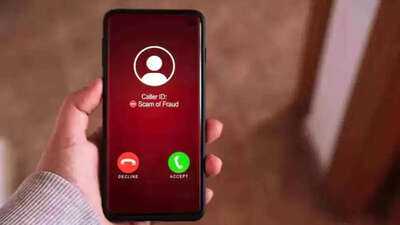Spam Calls: In today's digital age, online banking has certainly made our lives easier, but it has also increased the risk of cyber fraud exponentially. Every day, thousands of people fall victim to phishing calls, emails, and SMS that appear genuine but are actually fraudulent traps. If you've recently received a call from a bank official or a message about your account being blocked, beware; this could be a sign of fraud.
How do fraudsters use fake calls and SMS?
Cybercriminals use the name and logo of a real bank to send fake messages or emails. The messages state that your account is about to be blocked, that KYC updates need to be performed, or that card verification is required. They then ask you to click on a link or provide your OTP. As soon as you do this, they gain access to all your bank account information.
How to Identify a Fake Call or SMS
First, remember that no bank ever asks for your OTP, PIN, or password through a call, email, or SMS. If a message contains a link, do not click on it. Genuine bank messages always come from official sender IDs like AXISBK, ICICIB, HDFCBK, etc. If the message comes from a mobile number or contains misspellings, links, or suspicious words, understand it is fake.
How to Protect Yourself
If you suspect a call or email, speak directly to your bank's customer care number, not the caller. Verify any updates only on the bank's official website or mobile app. Also, keep the spam filter on your mobile and email.
Report Immediately
If you accidentally share sensitive information or become a victim of fraud, don't panic. Immediately file a complaint by calling 1930 or visiting the website cybercrime.gov.in. Digital banking is as convenient as it is important to use it responsibly. Remember, caution is the key to safety, as one wrong click can deplete your entire bank balance.
You may also like

Which country has the strongest currency? If you get a job here, you'll have a great time returning to India.

MP CM virtually inaugurates 3 Compressed Bio-Gas plants developed in state

Joint Parliamentary committee constituted to examine Constitution (130th Amendment) bill

Uttarakhand govt forms panels to tackle court-ordered staff regularisation, wages & ex-servicemen jobs

Shah Rukh Khan could have been an IITian; even cracked the entrance exam but chose a different subject







